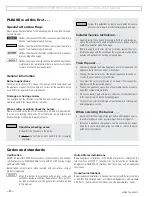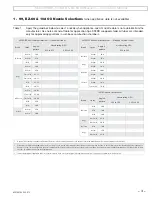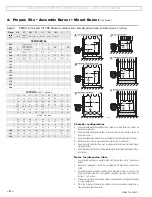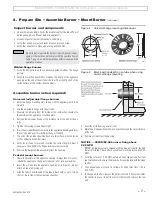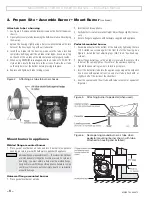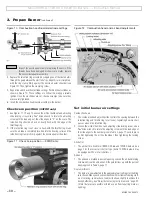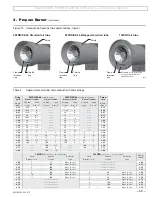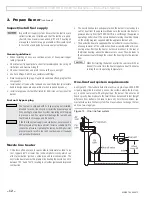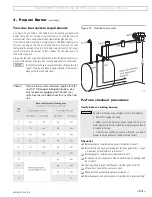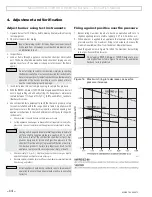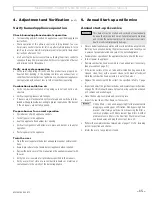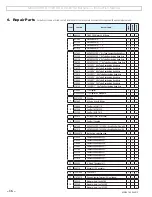
MN99102 042015
– 14 –
Model 99FRD, 102CRD & EZ-66 Oil Burners — Instruction Manual
4. Adjustment and Verification
Adjust burner using test instruments
1. Operate burner for 15 minutes before making final adjustments using
test equipment.
2. Check for leaks in fuel piping.
Inspect fuel piping system for leaks. Repair any leaks to avoid
fire hazard from oil leakage or combustion problems due to
air infiltration into oil.
3. Inspect flame
• Look at flame through appliance combustion chamber observation
port. The flame should be well-defined and should not impinge on any
appliance surface. (If you make air changes later, inspect the flame
again.)
Do not attempt to confirm combustion simply by inspecting
the flame visually. You must use combustion test instruments.
Failure to properly verify/adjust combustion could allow unsafe
operation of the burner, resulting in severe personal injury,
death or substantial property damage.
1. Insert test probe into vent sample opening to sample flue products.
2. With the 99FRD, EZ-66 or 102CRD burner equipped with the correct oil
nozzle, head setting and air band setting, the flue products will usually
contain between 11½% and 12½% CO
2
(5.9% and 3.8% O
2
) and zero
(Bacharach) smoke.
3. Use combustion test equipment to verify that burner is properly set up
for your installation, within the range listed in Table 3. Appliances with
positive pressure in the chamber may require a wider air opening. See
appliance instructions for details. Verify/adjust settings by testing with
instruments.
a. Check smoke. It should be zero on the Bacharach scale.
b. Set the appliance flue damper or barometric draft regulator so the draft or
pressure in the vent complies with the appliance manufacturer’s instruc-
tions.
Heating units designed for natural draft operation are normally
set for a slightly negative pressure, usually –0.01 to –0.02
inches w.c. draft at the combustion chamber test port. Ap-
pliances designed for forced draft (positive pressure in the
chamber) must be air-tight to prevent exfiltration of harmful
combustion products. Failure to properly set draft for the
appliance could result in severe personal injury or death.
c. Check percent of CO
2
(or O
2
). Fine tune the burner, if necessary, by slightly
adjusting the head position for more or less air.
d. Recheck smoke (should be zero) and flue or chamber pressure/draft (adjust
if necessary and retest).
All installations should be checked after one to two weeks of
operation to ensure the appliance/burner units are operating
correctly.
Figure 16 Maximum firing rate decreases as overfire
pressure increases
Firing against positive overfire pressure
1. Burner rating maximum inputs are based on operation with zero to
slightly negative pressure overfire, typically 0.01 to 0.03 inches w.c.
2. When a burner is applied to an appliance that operates with a higher
pressure overfire, the maximum firing rate decreases because the
maximum available air flow from the burner blower decreases.
3. Read the graph below in Figure 16 to find the maximum burner firing
rate at positive overfire pressures.
Do not apply a 99FRD, EZ-66 or 102CRD burner at a pres-
sure higher than listed in Figure 16 unless the application
has been factory pretested.


